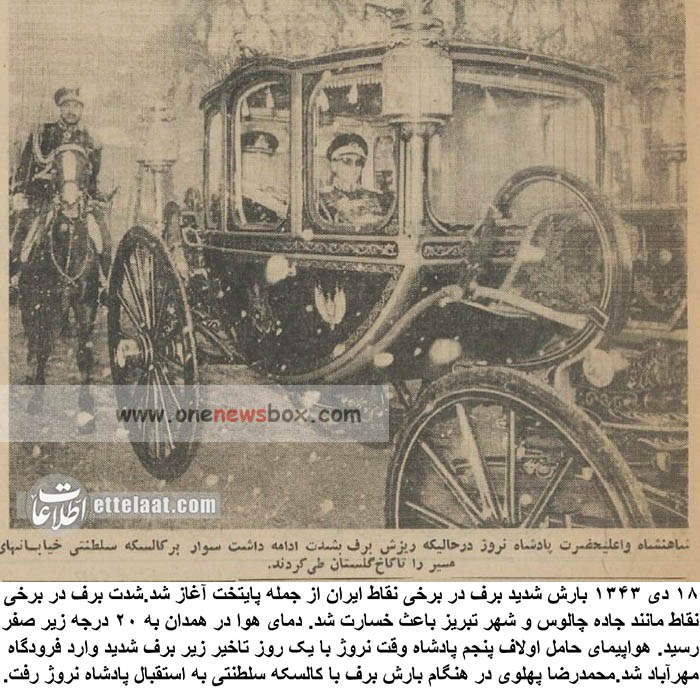On January 18, 1343 (January 18, 1965, in the Gregorian calendar), Iran witnessed one of its most significant snowfalls in recent history. This event left a profound impact on various regions of the country, paralyzing daily life and showcasing the resilience and challenges faced by the nation during that era. The snowfall, while enchanting in its sheer magnitude, brought about widespread damage and disruptions, particularly in major cities and transportation routes.
The Impact of Heavy Snowfall Across Iran
The heavy snowfall began on January 18, enveloping many parts of the country, including Tehran, the nation’s capital. For a city accustomed to seasonal snow, the scale of this particular storm was unprecedented. Streets were blanketed in layers of snow, making transportation nearly impossible. Businesses, schools, and government offices faced closures, while residents struggled to adapt to the harsh weather conditions.
In Chalus, a city known for its scenic beauty and the iconic Chalus Road, the snowfall wreaked havoc. Chalus Road, a vital artery connecting Tehran to the northern provinces, was completely blocked by the accumulation of snow and ice. This critical route, carved through the Alborz Mountains, became impassable, leaving travelers stranded and cutting off vital supplies to and from the region. Rescue operations were launched, but the treacherous conditions slowed efforts, leaving many to endure freezing temperatures until aid could reach them.

